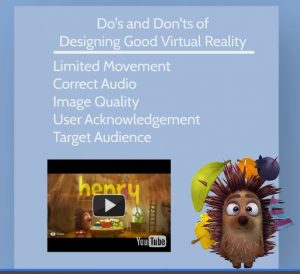The September Digital Marketing Shared Interest Group (SIG) was pleased to welcome Branden Middendorf, Co-Founder of independent game studio Gear5 Media and Virtual Reality enthusiast, to our group to discuss all of the amazing and exciting things happening with Virtual Reality technology, and the opportunities marketers and brands have for storytelling. Read more about Branden’s work and view his original post on his website.
We are on the brink of a huge transition aimed to change the way we consume media. Building experiences that immerses customer and consumers in a new way will be a game-changer in many different markets – both B2C and B2B.
Virtual Reality (VR) is the new big thing people are craving these days and continues to grow. By 2018, virtual reality users are projected to reach 178 million (Fortune). The big question is, how can it be incorporated into a business setting or outside of the game space it’s normally marketed? The best place to start is by:
1) understanding your means of delivery;
2) building a mobile experience; and
3) and identifying how you will create the actual experience.
Means of Delivery
 How will you be delivering the content? If you’re building an interactive experience using Vive or Oculus Rift, you will need to look into the computer requirements to run the application.
How will you be delivering the content? If you’re building an interactive experience using Vive or Oculus Rift, you will need to look into the computer requirements to run the application.
Mobile is Better
Just having VR isn’t going to be enough. Think about how most people will consume your VR experience. Simplifying your idea for a mobile solution may be your best bet. With a simple one-button interaction and the amount of people that own a smartphone today, it will be much easier to deliver application out to a larger audience.
Creating the Experience
Since we’ve been touting this interactive experience, your experience is everything! Here are three items to consider when developing the VR experience.
- When creating an experience in virtual reality, you need to think about movement. More specifically, how do you minimize movement? There have been many VR scenarios where the result was motion sickness from the user due to a fast moving experience.
- You need superior Image quality. You don’t want to watch a movie with pixels on it, so why would you want to be immersed in a new training simulator or location and visibly be able to see it’s a simulation.
- Acknowledging how that user is going to interact when they are immersed in the VR experience. Treat the camera as if it were the actual person. This will increase the level of immersion, driving a more powerful story.

 By:
By: 